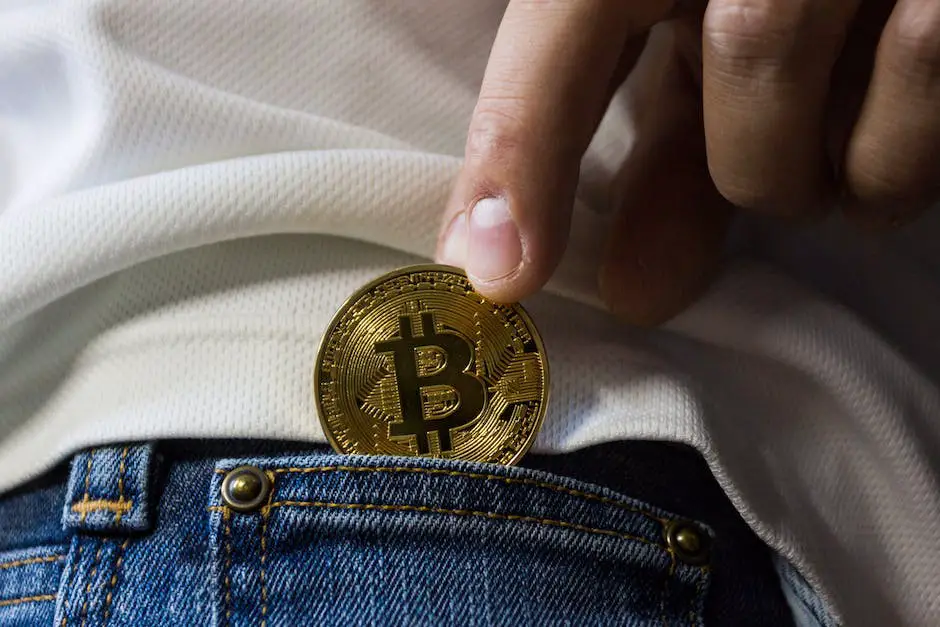Exploring Stablecoins: Types, Benefits & the Future
With the rapid evolution of the cryptocurrency landscape, the emergence of stablecoins has caught the attention of both investors and users worldwide. As a novel solution to the challenges posed by the notorious price volatility of cryptocurrencies, stablecoins aim to offer stability, high liquidity, and an array of benefits critical in addressing the growing demand for digital assets. In this essay, we delve into the various aspects of stablecoins, from their types and benefits to their risks, challenges, and real-world use cases. Furthermore, we cast a gaze into the future of stablecoins and explore the potential implications of their continuous growth on the global financial ecosystem.
Types of Stablecoins
Stablecoins
As the name suggests, are a type of cryptocurrency designed to maintain a stable value. This attribute offers stablecoins some unique advantages over more traditional cryptocurrencies like Bitcoin, which are known for their extreme price volatility. There are several ways in which stablecoins achieve this price stability, and these strategies give rise to three main categories: fiat-collateralized, crypto-collateralized, and non-collateralized.
Fiat-collateralized Stablecoins
Fiat-collateralized stablecoins are backed by physical or digital assets, usually a major fiat currency, such as the US dollar, euro, or yen. For every stablecoin issued, the equivalent value in the fiat currency is held in reserve by a central authority. This reserve typically takes the form of traditional bank accounts or more advanced smart contracts. The central authority is tasked with auditing and managing these reserves, ensuring their security and transparency.
The price stability of these stablecoins is derived from their direct link to the value of a national currency, which tends to be much more stable compared to cryptocurrencies. In case of price fluctuations, users can redeem their stablecoins for the equivalent value in the fiat currency, in a process known as a redemption mechanism. The most popular example of a fiat-collateralized stablecoin is Tether (USDT), which is pegged to the US dollar.
Crypto-collateralized Stablecoins
Unlike fiat-collateralized stablecoins, crypto-collateralized stablecoins are backed by other cryptocurrencies, such as Bitcoin or Ethereum. These stablecoins maintain price stability by over-collateralizing their reserves, meaning there are excess assets held as collateral, thus reducing the risk of price fluctuations.
For example, a crypto-collateralized stablecoin might require users to deposit $200 worth of Bitcoin to create $100 worth of stablecoins. This approach effectively ensures that even if the value of the collateral experiences sudden price drops, there would still be enough assets to secure the value of the stablecoins in circulation.
The major downside to this method is that it makes the stablecoin vulnerable to the inherent volatility of the underlying cryptocurrency. In addition to that, the collateral management process tends to be complex and can require active monitoring. MakerDAO’s DAI, a decentralized stablecoin backed by Ethereum, is a prime example of a crypto-collateralized stablecoin.
Non-collateralized Stablecoins
Non-collateralized stablecoins, also known as algorithmic stablecoins, are not backed by any physical or digital assets. Instead, they maintain their value through a combination of complex algorithms and smart contracts that control the supply and demand of the stablecoin.
These algorithms function automatically, increasing and decreasing the stablecoin’s supply as needed to maintain its target value. For example, if the value of the stablecoin starts to drop, the algorithm would reduce the available supply, which in turn would increase the demand and subsequently restore the price. This approach is inspired by the way central banks manage traditional fiat currencies using monetary policies.
One notable example of a non-collateralized stablecoin is Ampleforth, which adjusts the total supply of its tokens in response to demand changes, allowing it to maintain price stability.
Introduction to Stablecoins
Stablecoins have emerged as a promising solution to combat the volatility typically associated with cryptocurrencies. By employing various strategies, such as pegging their value to traditional currencies or using advanced algorithms, stablecoins aim to provide a more stable and secure digital asset. As the world of digital currencies continues to evolve, stablecoins will likely play an increasingly important role in bridging the gap between traditional finance and cryptocurrencies.

Benefits of Stablecoins
The Benefits of Stablecoins
Over the years, the growing popularity of stablecoins can be attributed to their ability to maintain a relatively stable value, often by being pegged to a reserve of traditional assets such as fiat currency or gold. This stability offers several advantages, including reduced volatility, increased liquidity, and the potential for greater financial inclusion. Consequently, stablecoins have become a more attractive option for investors and users compared to other cryptocurrencies, ultimately fostering a smooth transition between conventional finance and the realm of digital assets.
Reduced Volatility
One of the main benefits of stablecoins is that they provide a stable store of value and medium of exchange due to their pegging mechanism. In traditional cryptocurrency markets, price swings can be extreme, creating uncertainty for users and investors. Stablecoins, however, can maintain a relatively stable value, allowing users to transact in a predictable manner without being exposed to the constant fluctuation of prices that is commonly associated with traditional cryptocurrencies.
This reduced volatility offers advantages for both individuals and businesses, as it enables them to better manage their financial assets and interactions, making stablecoins a more appealing choice for those who require a more stable form of digital currency.
Increased Liquidity
Stablecoins can help bridge the gap between fiat currencies and cryptocurrencies, providing greater liquidity between the two. This advantage is particularly valuable for traders and investors, as it allows for more efficient and seamless trading in the market. By serving as a stable store of value and medium of exchange, stablecoins enable users to quickly switch between cryptocurrencies and fiat currency without major price fluctuations.
Enhanced liquidity provided by stablecoins also supports the growth of the broader cryptocurrency market, as it enables users to easily layer in more complex financial instruments and trading options, such as lending or borrowing, creating a more mature financial ecosystem.
Greater Financial Inclusion
In many parts of the world, access to traditional financial services remains limited, which can lead to financial exclusion for those unable to access banks or other financial institutions. By offering an accessible, borderless, and cost-effective alternative to traditional finance, stablecoins have the potential to promote financial inclusion on a global scale.
Stablecoins can be easily transacted using mobile devices, enabling individuals and businesses to access financial services without relying on traditional banks. This brings opportunities for savings, money transfers, loans, and investment to populations that have historically been excluded from the global financial system.
Furthermore, stablecoins can be used as a more stable savings vehicle compared to volatile local currencies, offering a secure store of value and potentially shielding users from economic instability or inflation in their home countries.
Attractiveness to Investors and Users
Considering the benefits discussed above, it comes as no surprise that stablecoins are increasingly attractive to investors and users compared to other cryptocurrencies. The reduction in volatility offers an appealing option for those who want exposure to the digital currency market without taking on the increased risk associated with traditional cryptocurrencies. Additionally, the increased liquidity and potential for financial inclusion have long-term benefits for the broader financial market, attracting new users and promoting adoption.
Introduction
Stablecoins have been gaining traction in the world of digital currency, offering reduced volatility, increased liquidity, and the potential for greater financial inclusion compared to traditional cryptocurrencies like Bitcoin and Ethereum. These digital assets aim to maintain a stable value by pegging them to a reserve of assets such as fiat currencies, commodities, or even other cryptocurrencies. As stablecoins play an increasingly important role in global finance, it is essential for users and investors to understand their benefits and related risks.

Risks & Challenges
Benefits and Risks of Stablecoins
While stablecoins provide numerous advantages like decreased market fluctuations and enhanced liquidity, there are associated risks and challenges that need to be addressed for their growth and wider adoption. Some key challenges include counterparty risks, regulatory concerns, and potential market manipulation. By understanding and resolving these issues, stablecoins can continue to forge a path towards becoming an integral part of the digital currency landscape and revolutionizing the global financial ecosystem.
Counterparty Risks
One of the primary risks associated with stablecoins is counterparty risk. Stablecoins are often reliant on a reserve of assets to maintain their value, and this reserve is typically managed by a third party, or “counterparty.” If the counterparty fails to manage the reserve properly, users and investors could be at risk of losing their funds. For example, if a stablecoin’s reserve were to become insolvent, the users holding the stablecoin might be unable to redeem their tokens for the underlying assets, leading to a loss in value.
Counterparty risks can also arise from the custodian or operator of the stablecoin itself. Users and investors must trust that the organization behind the stablecoin is following proper security measures, accounting practices, and legal compliance to maintain the stability of the coin. A lack of transparency or oversight can lead to mistrust and fear of potential losses, impacting the adoption and overall utility of the stablecoin.
Regulatory Concerns
Regulation is another key challenge faced by the stablecoin market. As digital assets, stablecoins have faced scrutiny from regulatory bodies around the world, especially in regards to their use and legality. A lack of clear regulatory guidelines has led to a fragmented landscape, with different jurisdictions enacting their own rules and regulations.
This uncertainty can pose significant challenges for stablecoin projects, as they may need to navigate multiple regulatory frameworks to operate legally. Regulatory concerns can also impact the growth of the stablecoin market, as more scrutiny may lead to greater barriers to entry or even the shuttering of existing stablecoin projects. Furthermore, potential regulatory crackdowns could introduce market instability and impact the overall perception of stablecoins as a viable means of mitigating volatility in the cryptocurrency market.
Potential Market Manipulation
Market manipulation is another potential risk faced by stablecoin users and investors. By design, stablecoins rely on mechanisms to maintain their pegged value, tying their value to an external asset. However, these mechanisms can be vulnerable to exploitation, leading to price manipulation and instability.
For example, traders or entities with significant holdings of a particular stablecoin might influence the price of the stablecoin by trading large volumes in a short period of time. This could lead to temporary price fluctuations and cause the stablecoin to deviate from its intended stable value. Additionally, the operators behind a stablecoin might misuse their control over the reserve to influence prices, benefiting themselves at the expense of users and investors.
Stablecoins
Stablecoins have emerged as a significant development in the cryptocurrency market, providing a stable value amidst the highly volatile nature of other cryptocurrencies. These stablecoins often peg their value to a stable currency like the US Dollar or other assets such as precious metals or a basket of currencies. Some of the most popular stablecoins include Tether (USDT) and USD Coin (USDC), which have become essential tools for various real-world use cases, such as remittances, trading, and acting as a stable store of value.

Real-world Use Cases
Conclusion
In conclusion, stablecoins have the potential to transform the landscape of the cryptocurrency market, but their associated risks and challenges must be acknowledged and addressed in order for widespread adoption to occur. Counterparty risks, regulatory concerns, and potential market manipulation represent significant obstacles that could hinder their growth. Therefore, it is crucial for stablecoin proponents and developers to maintain transparency, establish trustworthy mechanisms, and engage with regulators to ensure a stable and secure future for this emerging financial asset.
Remittances
One of the primary real-world use cases for stablecoins like USDT and USDC is international remittances. Traditionally, sending money across borders can be slow and expensive, involving various intermediaries and involving high fees. Stablecoins provide an efficient and cheaper alternative, bridging the gap between traditional banking systems and the cryptocurrency ecosystem.
With stablecoins, remittances can be sent in a matter of minutes through blockchain technology with little to no fees, a stark contrast to traditional methods that can take several days or incur high costs. Moreover, as stablecoins maintain a stable value, they shield users from the volatility common in other cryptocurrencies, providing a secure means of transferring value across borders.
Trading
Another use case for stablecoins is their role in cryptocurrency trading. The volatile nature of cryptocurrencies can pose significant risks for people trying to time trades or implement complex trading strategies. Stablecoins like USDT and USDC have a role in offering traders the ability to escape market volatility when needed and lock in profits without having to cash out entirely into fiat currency.
These stablecoins are also frequently used as base trading pairs on various cryptocurrency exchanges, allowing users to trade between cryptocurrencies without converting them back into fiat currencies. This not only simplifies the trading process but also avoids the need for additional fees and conversions.
Stable Store of Value
A significant drawback of cryptocurrencies like Bitcoin is their price volatility, making them unreliable as a store of value for investors seeking stable and predictable returns. For example, in the 2017-2018 crypto boom and crash, many people were left with devalued assets and significant financial losses. In this context, stablecoins like USDT and USDC have found a niche as a stable store of value.
By pegging their value to a stable currency or asset, stablecoins provide users with a digital asset that maintains a steady value over time. This characteristic makes them an attractive alternative for investors seeking a safe-haven during times of cryptocurrency market volatility or a predictable long-term store of value.
Introduction
Stablecoins, such as Tether (USDT) and USD Coin (USDC), have gained considerable attention due to their practical use cases in today’s global financial landscape, including remittances, trading, and as a stable store of value. By addressing the inherent volatility associated with cryptocurrencies, these digital assets offer opportunities for increased efficiency, cost savings, and risk management. With the blockchain and cryptocurrency industry continually evolving, it’s crucial to consider how the importance and adoption of stablecoins might grow, shaping the future of digital finance.

The Future of Stablecoins
Potential Developments
As the market for stablecoins continues to expand, various trends and developments are emerging, warranting attention from both the cryptocurrency community and traditional financial institutions. Some key aspects include the rise of central bank digital currencies (CBDCs), integration with decentralized finance (DeFi) platforms, and evolving regulatory frameworks. This section delves into these factors, examining their potential impact on stablecoins and the broader financial landscape.
Central Bank Digital Currencies (CBDCs)
One of the most exciting developments in the world of stablecoins is the rise of central bank digital currencies, or CBDCs. These digital assets are issued by central banks, and they aim to provide a stable form of digital currency that maintains the value of the underlying fiat currency. Several countries have already begun exploring and developing their CBDCs, such as China’s Digital Currency Electronic Payment (DCEP) system and Sweden’s e-krona.
The introduction of CBDCs could significantly impact the existing stablecoin market, as these government-backed digital currencies would likely carry more credibility and safety compared to privately issued stablecoins. This could lead to a shift in demand from traditional stablecoins to CBDCs, especially as more central banks consider their implementation. However, the success of CBDCs will depend on their design and distribution, as well as their ability to coexist with existing digital currencies.
DeFi Integration
As the decentralized finance (DeFi) ecosystem continues to grow, stablecoins are becoming increasingly integrated into various platforms and applications. DeFi applications, such as lending platforms, decentralized exchanges, and liquidity pools, all benefit from the stability that stablecoins provide.
In the future, stablecoins could become a cornerstone of the growing DeFi market, providing stable collateral for loans and enabling seamless cross-border transactions. They could also be used as a base currency for various financial products, such as tokenized stocks or other real-world assets. As the DeFi space continues to innovate, it’s likely that we’ll see new applications and use cases built around stablecoins, further cementing their role in decentralized finance.
Regulatory Changes
As stablecoins gain prominence, it’s only natural for regulators to take a closer look at their operation and potential risks. In several jurisdictions, regulators have begun to propose and implement regulations that could impact the stablecoin market, such as requirements for stablecoin issuers to maintain a certain level of reserve backing or to conduct regular audits.
In the future, it’s expected that more regulatory changes will be introduced to address the potential risks associated with stablecoins, including transparency, security, and consumer protection. These regulations could create a more stable environment for the stablecoin market and help maintain investor confidence. However, increased regulatory scrutiny could also create challenges for some current stablecoin projects, particularly those that are not transparent about their reserve holdings or lack adequate security measures.
Conclusion
As the stablecoin market continues to evolve and mature, it’s crucial for all parties, from issuers to investors and regulators, to adapt and prepare for these upcoming developments. The implementation of CBDCs, DeFi integration, and regulatory changes could shape the future landscape of stablecoins, transforming them into a critical component of the broader financial system. Embracing these changes and leveraging the unique characteristics that stablecoins bring to the table could lead to new opportunities and a more innovative financial landscape in the coming years.

Photo by bash__profile on Unsplash
As the stablecoin landscape continues to evolve, it becomes increasingly important to understand the intricacies of this emerging digital asset class. The benefits of stablecoins, including reduced volatility, increased liquidity, and potential financial inclusion, make them attractive for various purposes, such as remittances, trading, and preserving value. Although stablecoins face their own set of risks and challenges, it is evident that their role in the digital age is only getting started. With the prospect of central bank digital currencies, deeper DeFi integration, and improved regulatory frameworks, there is no doubt that stablecoins are poised to shape the future of the financial world in monumental ways.
